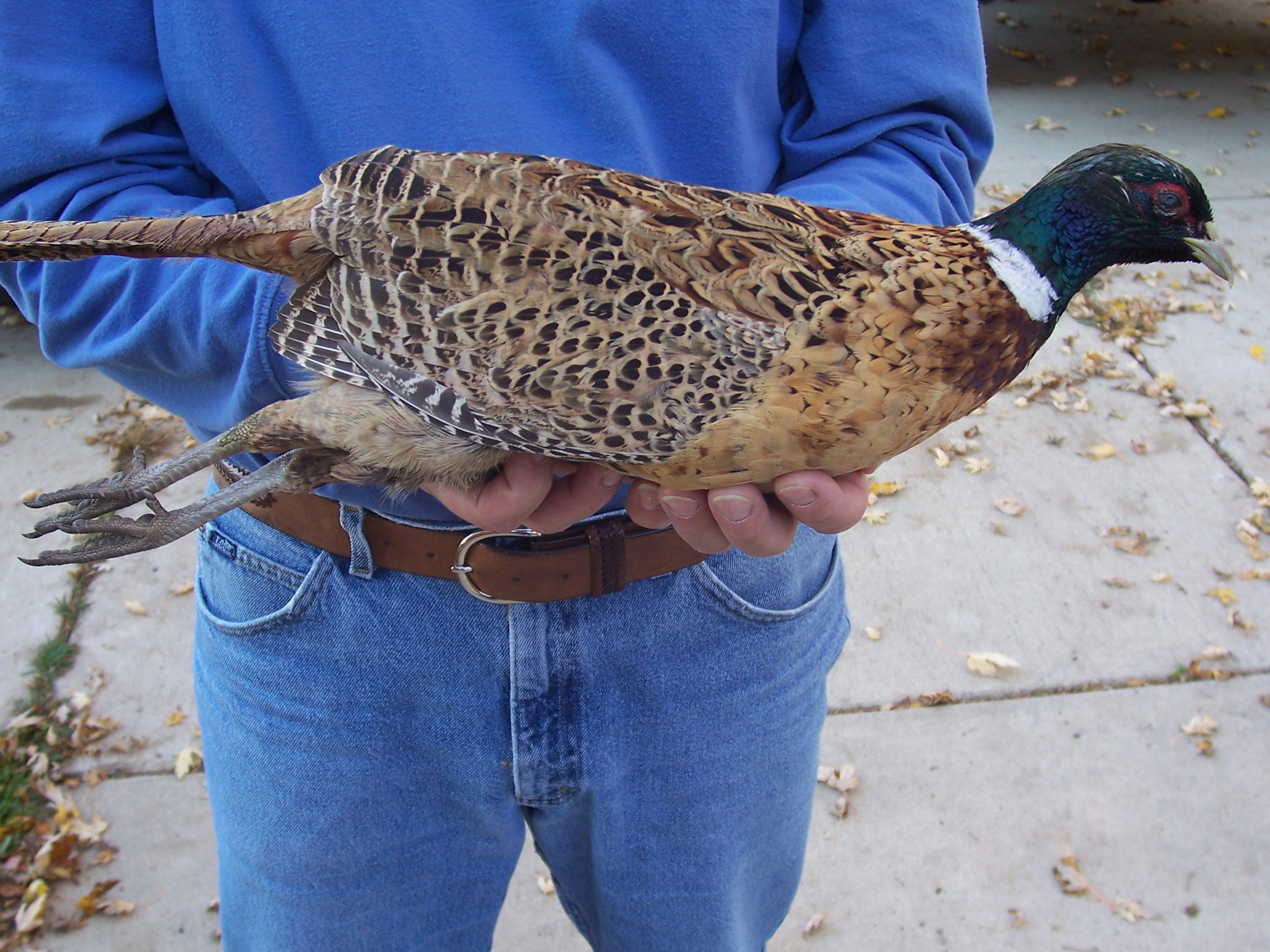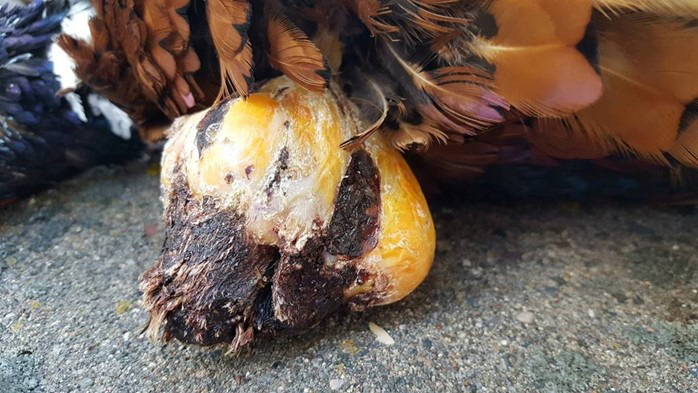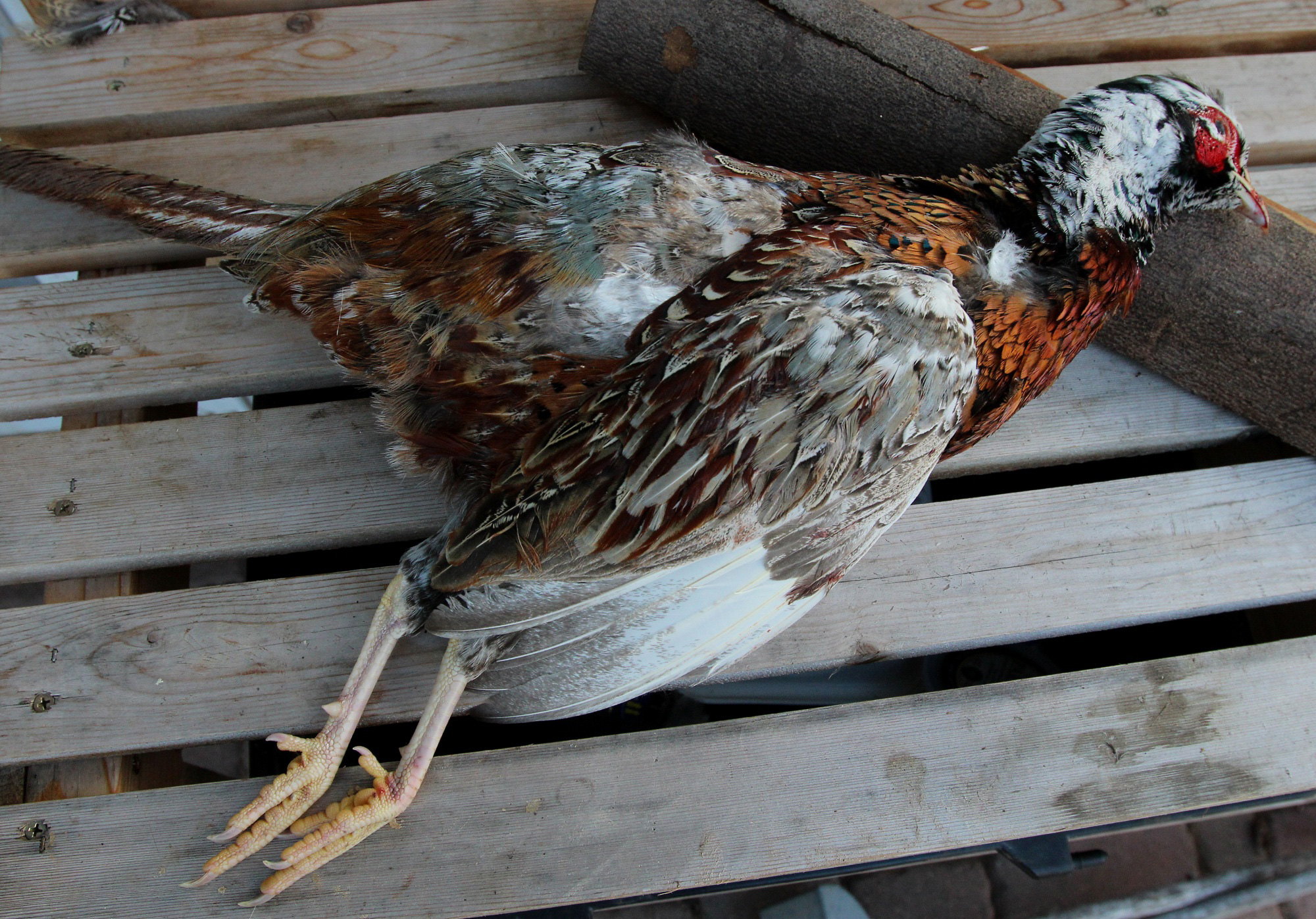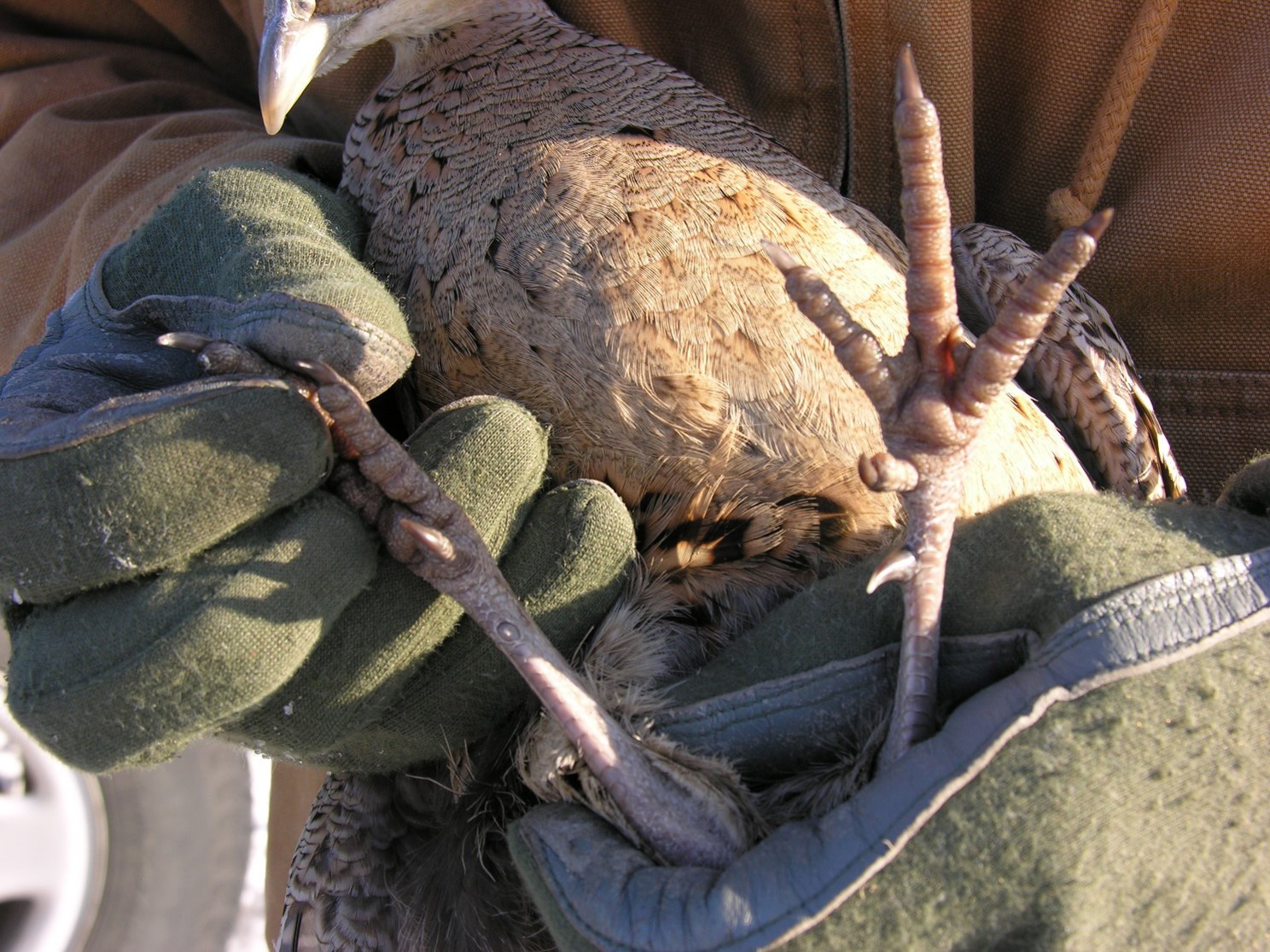Pheasants Forever receives some very interesting questions throughout the upland season as hunter harvest reveals some unusual, but incredibly interesting attributes from ringnecks across their range. The following is your daily download of genetic traits that can quickly turn any hunt into a tailgate rubbernecking session.
Leucism (“leukos” is Greek for white)
The online rooster phenomenon that uplanders witness each year – a rooster that has all the typical characteristics of the King of Gamebirds, but includes frosty splotches of white on its head, back, wings, or tail – is the result of a genetic condition called leucism (pronounced LUKE-ism). The degree of leucism varies with a bird's genetic makeup. The reduction of color in the bird’s plumage is due to an inadequate deposition of pigments (melanin) only in the bird’s feathers. Skin and eye tone remain their normal pigment and color.
Leucism is distinctly different than albinism – birds that feature a total lack of melanin, appear to be pure white or opaque, and exhibit pink eyes and skin. (Yes, you heard that correctly, pink skin.) Although leucism is rare, hunters are much more likely to harvest a rooster displaying traits of leucism, rather than an albino rooster.

Pheasants Forever member David Olsen and his hunting party spotted this rooster featuring leucism two weeks prior to finally harvesting it. They traveled back to the property with the intention of trying to find the bird and to their surprise, the dogs were able to flush it! “I’ve walked many miles over the years hunting ringnecks; I’ve never seen anything quite like this. It is now at the taxidermist!
Gynandromorphism (“gyne” is Greek for female, “andro” for male, and “morph” meaning variety)
Gynandromorphism is described by scientists as individual animals that have both genetically male and female tissues, and often have observable male and female characteristics. This should not be confused with labeling a pheasant as a hermaphrodite (possessing both male and female sex organs), as true hermaphrodites have not been found to exist in the world of pheasants.
Male and female features may be bilateral – appearing to divide down the middle into male and female sides, or they may be mosaic, with patches characteristic of one sex appearing in a body part of the other.

Pheasant Tales from the Crypt
From hens with spurs (research) to weird protrusions from harvested roosters, we’ve seen a number of curious photos that have passed the desk of Pheasants Forever staff. Here are a few of the notable contenders:



Information for this article was gathered from agency biologists, The Cornell Lab, and Audubon Society. Special thanks to the individuals who contributed scientific information and photos.